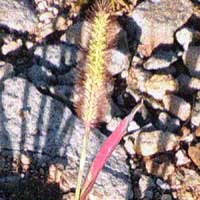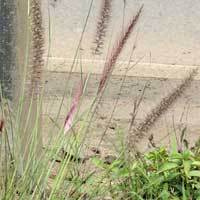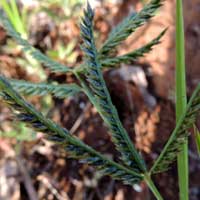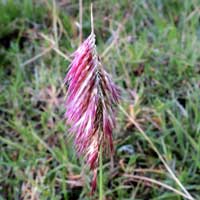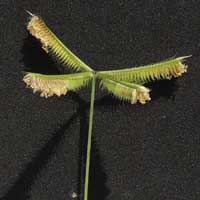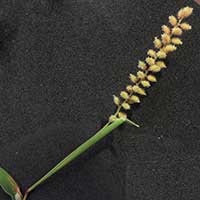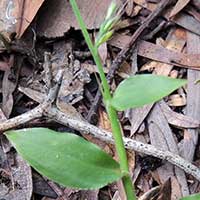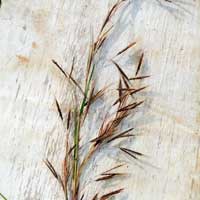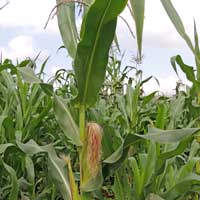Several kinds of bristle grass occur in Kenya. Most have a straight, slender spike and bristles on the spikelets.
Large clump grass with attractive reddish purple spikes of florets. Widely introduced elsewhere in tropics and subtropics.
Perennial grass with many shoots forming a tuft and lying flat on ground. Spike-like branches of inflorescence arranged like fingers.
Clump-forming grass with stems up to 0.5m tall. Pendulous spikelets crowded at top of infloresence. Often shaded a pink-red color.
Four orthogonal rachises branch from the top of the central rachis.
Small annual. The spikelets are enclosed in barbed bracts. Leaf margins ciliate.
Shady habitat grass on the forest floor. Leaves are broader, elliptical in shape. Creeps along close to ground.
Several kinds of brome grass occur in Kenya. This is one of the largest species, occasionally 2 m tall.
This very important grass is cultivated across Kenya and originates from Mexico.
